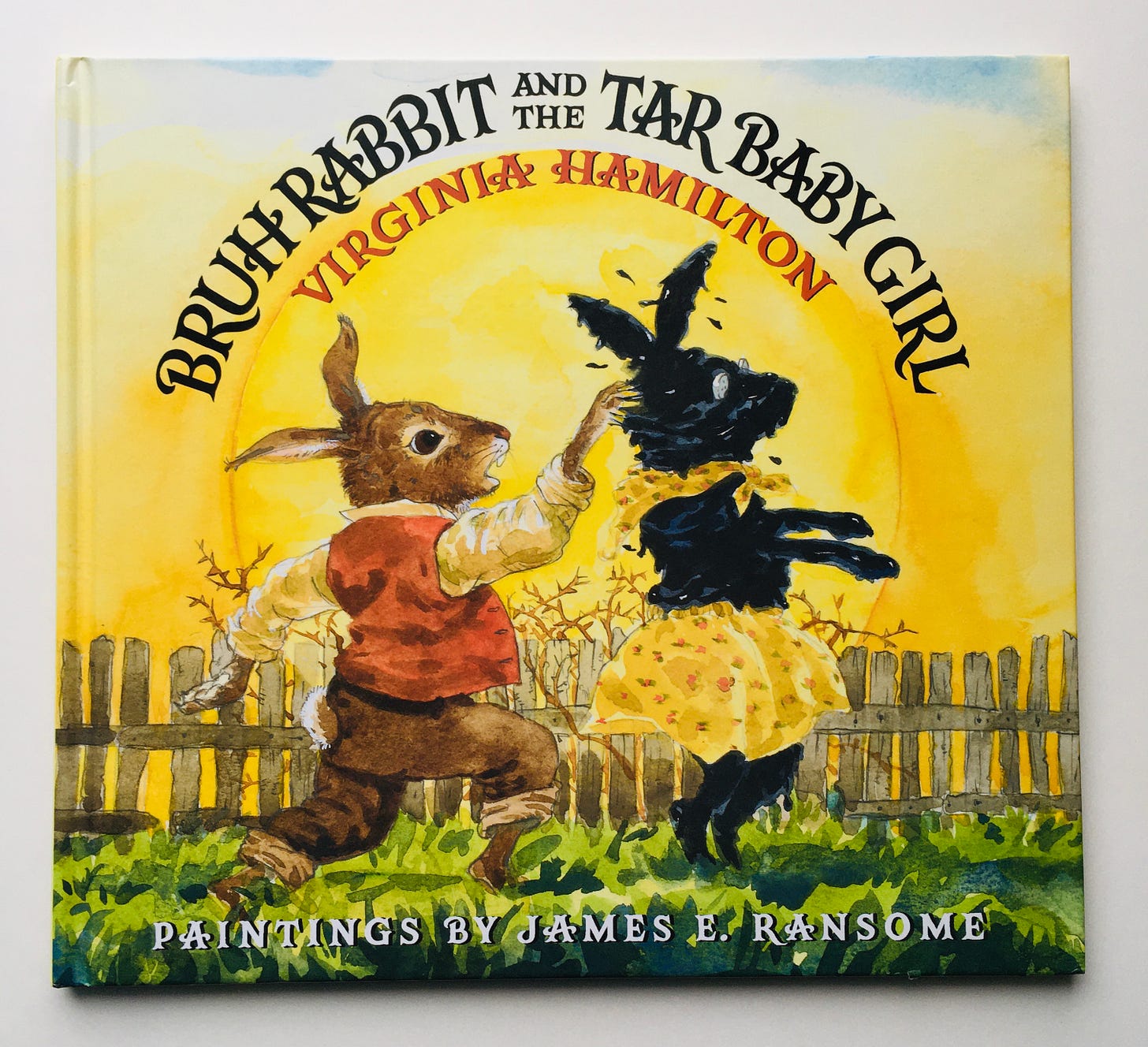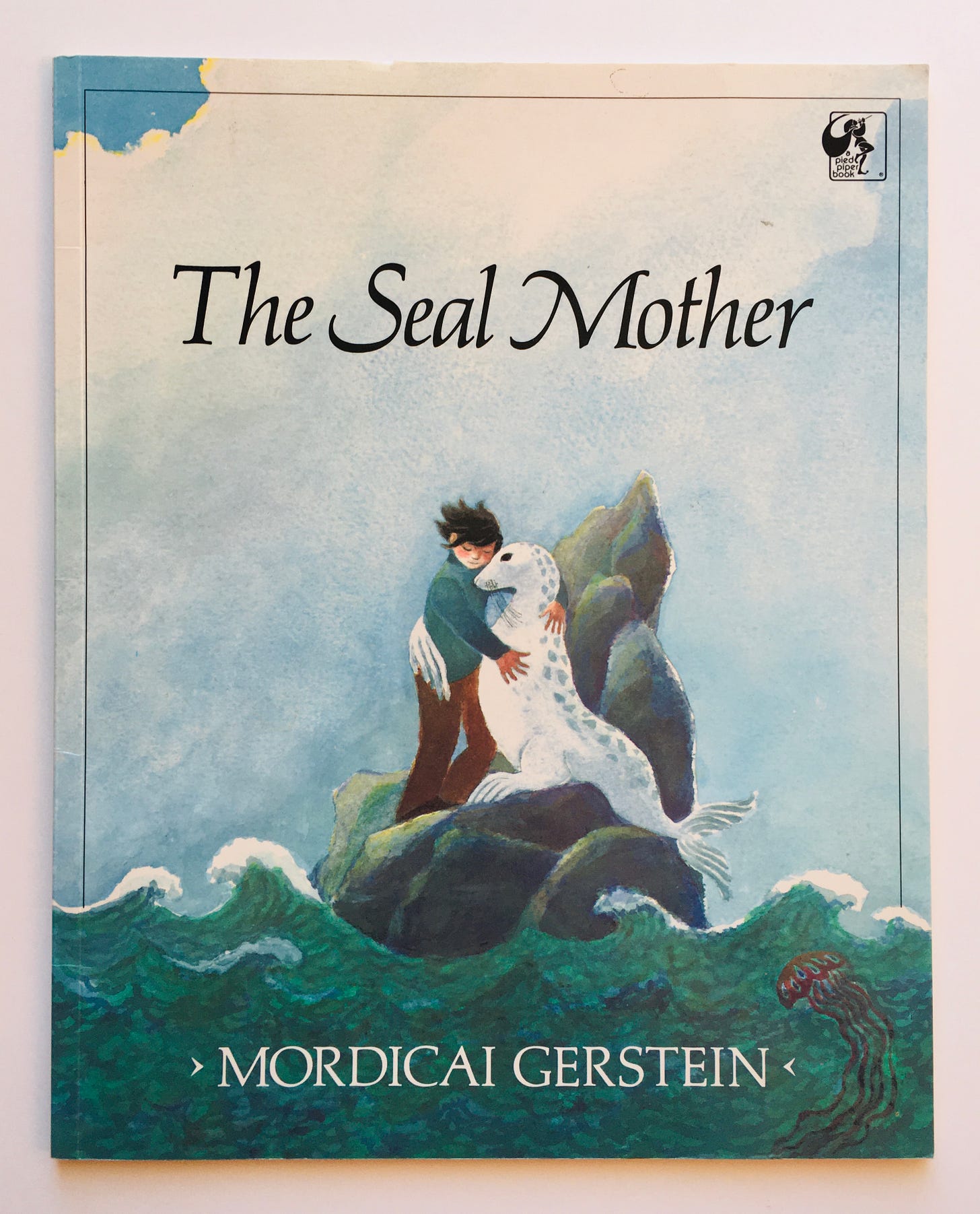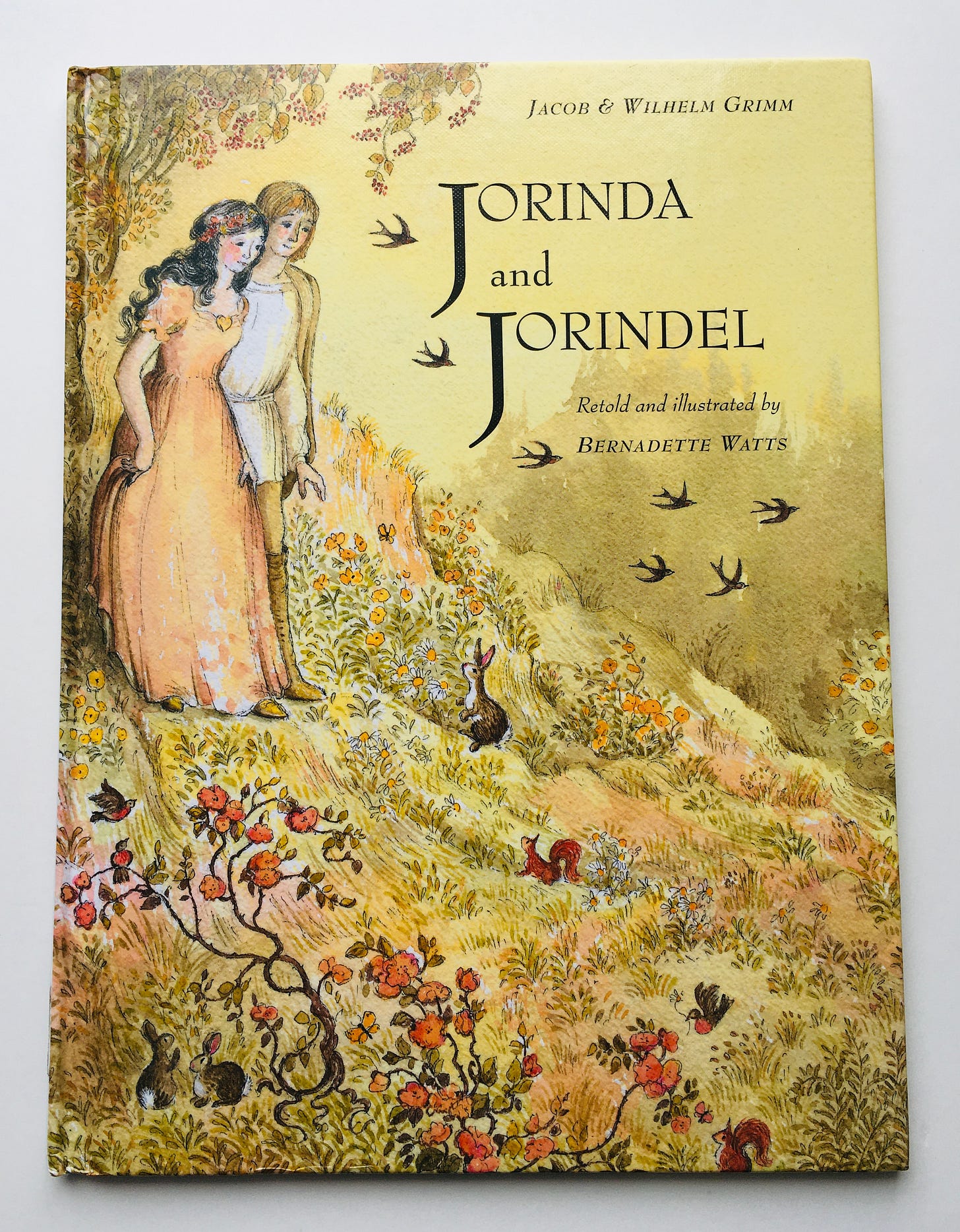This week and next, we’re revisiting an old gem from my archives and taking a deep dive into folk and fairy tales. This past Tuesday I explained the why behind reading fairy tales to kiddos (even the scary ones!) in Part 1, if you’d like to revisit that before jumping into some recommended titles today.
Otherwise, follow the breadcrumbs — at your own risk, of course — and carry on.
The Golden Sandal: A Middle Eastern Cinderella Story by Rebecca Hickox and Will Hillenbrand (1999)
Out of all the versions of Cinderella we’ve ever read, this captivating title, infused with the rich cultural traditions of the Middle East, is my favorite.
Here, readers follow the journey of Maha, a kind and gentle girl whose life is transformed by a pair of golden sandals. Set against the backdrop of a bustling Middle Eastern marketplace, Hickox skillfully tells a familiar version of Cinderella, weaving in elements of Arab culture, including vibrant colors, intricate patterns, and themes of family and community, all complemented by Hillenbrand’s enchanting, warm watercolor illustrations.
The Golden Sandal is a portrait of resilience, kindness, and the power of inner beauty — all the best parts of Cinderella, brought vividly to life.
The Twelve Dancing Princesses by the Brothers Grimm, illustrated by Dorothée Duntze (2013)
Once there was a king whose 12 daughters awoke every morning exhausted, with mysteriously ruined shoes. Befuddled, the king puts out a call to anyone who can figure out what happens every night — the one who solves the mystery will marry one of the princesses and inherit the kingdom.
Many come and fail, until one man arrives with an invisibility cloak and discovers that the princesses descend underground, dance themselves senseless at a great ball, and return to their beds each morning.
This story — known in Grimm’s original as “The Shoes That Were Danced to Pieces” — has been one of our favorites, and we’ve read many versions. This one has been altered the least, preserving the whole plot and sentiment if not the exact language that Jacob and Wilhelm used, and benefits enormously from Duntze’s skillful, perfectly strange illustrations. (In the scene where the princesses depart in the night on their boats, Duntze depicts the boats themselves as giant high heels, a visual choice that brings endless delight when we’ve revisited that page again and again.)
This is a well-told tale, supremely well done, and I think the best of all the variations.
Bruh Rabbit and the Tar Baby Girl by Virginia Hamilton, illustrated by James E. Ransome (2003)
Aside from their being hilarious and entertaining to children, familiarity with, or at least some knowledge of Brer Rabbit tales is part of being a culturally literate American. (But also — and this is not insignificant to me — there are no princesses waiting to be rescued in Brer Rabbit, and it’s pretty damn refreshing.)
I am hard-pressed to think of an author who has done more to bring a significant body of Black folklore to the world of children’s literature than the late Virginia Hamilton. Her 41 books — including the spectacular collections, Her Stories: African American Folktales, Fairy Tales, and True Tales and The People Could Fly: Black American Folktales, both of which I highly recommend — all have a deep focus on tradition, memory, and what’s passed down from generation to generation, especially in the lives and families of African Americans.
It makes sense, then, that her version of a Brer Rabbit tale — an oral tradition passed down by African Americans in the Southern U.S. — is so good: this title was published posthumously, after she’d had decades to perfect her craft. In this story, “It was a far time ago, and before a first winter snow, that Bruh Wolf had a run-in with pesty Bruh Rabbit.”
Bruh Wolf had planted corn and peanuts one year, and of course, Bruh Rabbit had not — but that didn’t stop the trickster bunny from trying to help himself to Wolf’s crop. In an effort to stop this thievery, Bruh Wolf puts up a “scarey-crow,” to no avail, and eventually lands on the idea of a tar baby girl — a human-sized rabbit covered in tar.
If you’re familiar with Brer Rabbit’s wily personality and many of his antics you might be able to guess what happens, but if not, you’ll have to read this for yourself. Full of colloquial language and phrasing (“dayclean” for dawn, “daylean” for dusk, “croker sack” for a burlap bag), this is not only fun to read aloud, but fun to look at — Ransome’s paintings are colorful works of art that add much to the action (when Brer Rabbit jumps on the tar baby girl’s back, the expression on his face says it all).
This is the perfect title for preschoolers all the way through upper elementary — anyone who appreciates a lively and energetic read.
The Seal Mother by Mordicai Gerstein (1986)
Selkie stories are folktales from the Northern Isles and Western coast of Scotland, sometimes including Ireland, and always center around the same motif: a seal comes out of the water, takes off its skin, and transforms into a woman who is then tricked into a relationship with a man, who prevents her from returning to the sea for a certain period of time by hiding her skin. Sometimes she is able to return, sometimes not, but the shedding of the sealskin to become a woman and subsequent entanglement in some mortal drama is key.
This title tells a very traditional version of a selkie story — only here, after the coercion, the selkie has a baby with the man who deceived her and stole her skin. His whole life the boy knows something is a bit strange about his mother, and one day, she disappears. When the boy goes to look for her he discovers her secret along with a whole family that lives beneath the waves. Unlike many selkie stories (and we have read every one I can get my hands on), this one’s ending is possibly happy, possibly sad, depending on which way you look at it: the boy loses his mother, yes, but she returns to the sea where she belongs and his family greatly expands. (If you want a deeply lovely cinematic version of this: my eldest and I both bawled our heads off at the 2014 movie, Song of the Sea.)
Gerstein’s prose and soft paintings work in tandem to tell this riveting, mournful tale with an air of compassion that feels a bit rare among these stories — there’s an uncommon softness here, and it’s just right. I can’t think of a better way to handle a story that asks the deep and timeless question: how much do we lose when we love someone?
Jorinda and Joringel by Bernadette Watts (2005)
One of the great joys of being a mother has not only been sharing beloved books with my children, but discovering new ones to love alongside them. This is exactly what happened with the story of Jorinda and Joringel.
A witch lives in a castle deep in the forest, and her pastime is turning young women into birds and keeping them in thousands of cages in her lair (an interesting hobby, to say the least). Any young man who gets too near her castle is turned to stone.
Despite knowing of the witch and her proclivities, one day Jorinda and Joringel, a young couple in love, find themselves too near the castle and end up in the exact situation they were trying to avoid: Jorinda is now a nightingale. The witch, for reasons of her own, frees Joringel, but he is without hope of helping his love until one night, the solution comes to him in a dream: he must find a particular flower with a pearl inside, and with its magic, reverse the witch’s spell. He finds the flower, storms the castle, and despite the witch’s best efforts, manages not only to free Jorinda but the many other birds in cages as well (though it’s not stated in this title, the number of cages is often cited as 7,000, which freaks me right out every time).
Watts’ talent, in my opinion, lies in her willingness to take on many lesser-known fairy tales and to render them simple enough — though not watered down in the least — for picture books. It’s in this way that, well before we started reading straight from much more challenging collections of Grimms’, my children became acquainted with many Grimms’ stories. Watts’ style, in both writing and illustration, is always warm and accessible, making her my top pick for fairy tale titles for toddlers, preschoolers, and early elementary kids.
Note: this was republished by Floris Books in 2017 as The Enchanted Nightingale: The Classic Grimm’s Tale of Jorinda and Joringel; it is the same book.
Tune in next week for Part 3, and happy reading!
Sarah









These books are exquisite. The Twelve Dancing Princesses was an absolute favorite of mine as a girl and I can't wait to introduce it to my kid when she's older.
So many of these titles are new to me; thank you for such a great and varied list! I'm putting "Twelve Dancing Princesses" on hold!